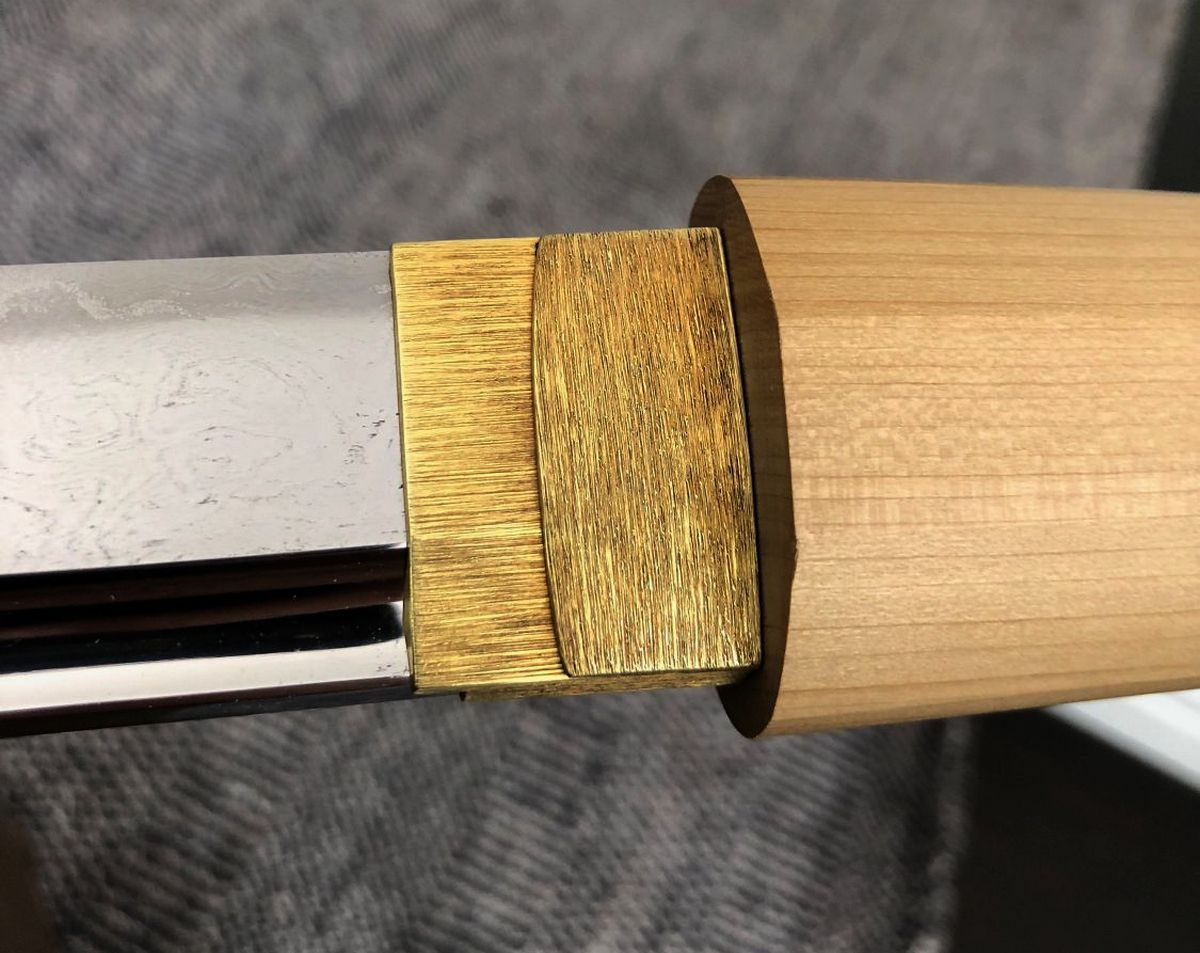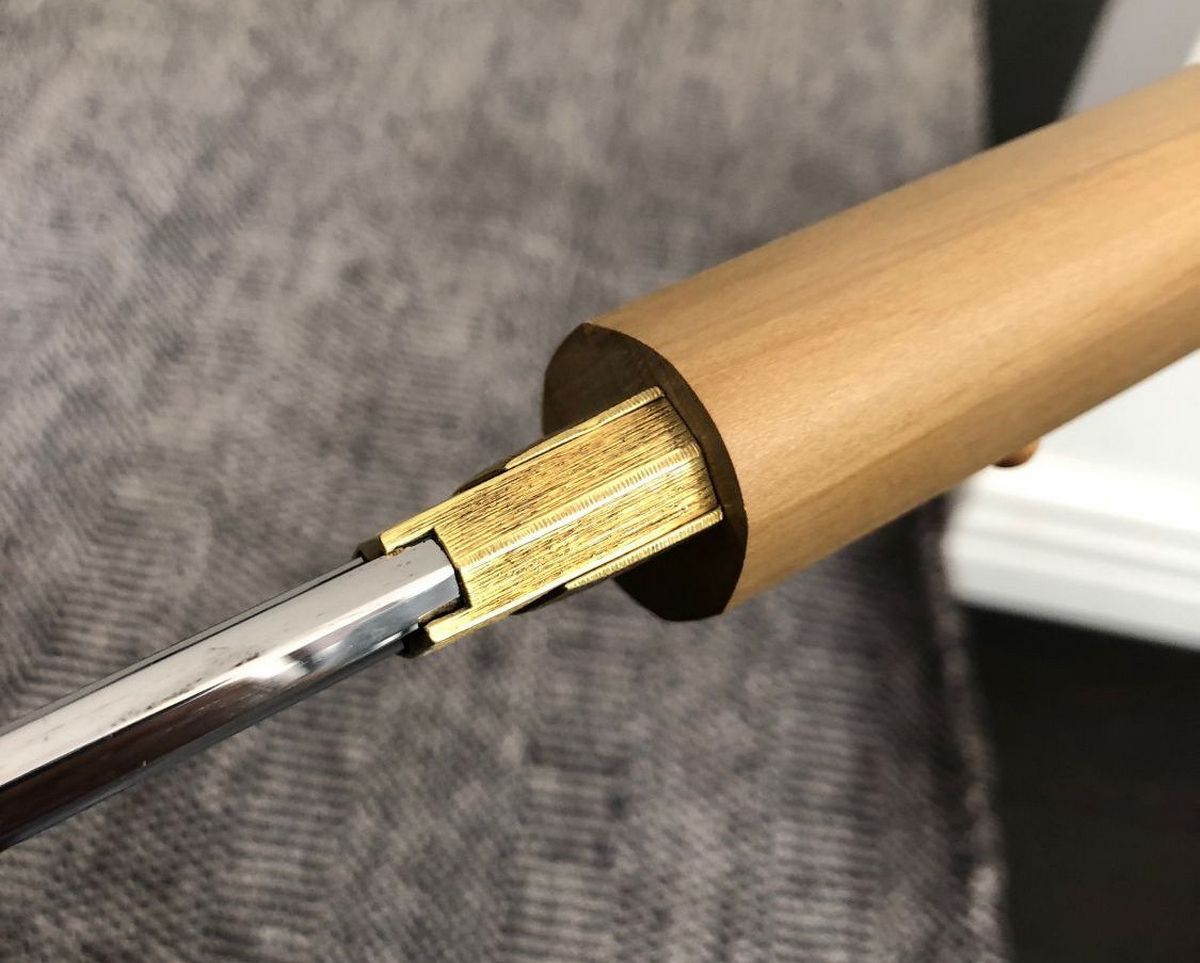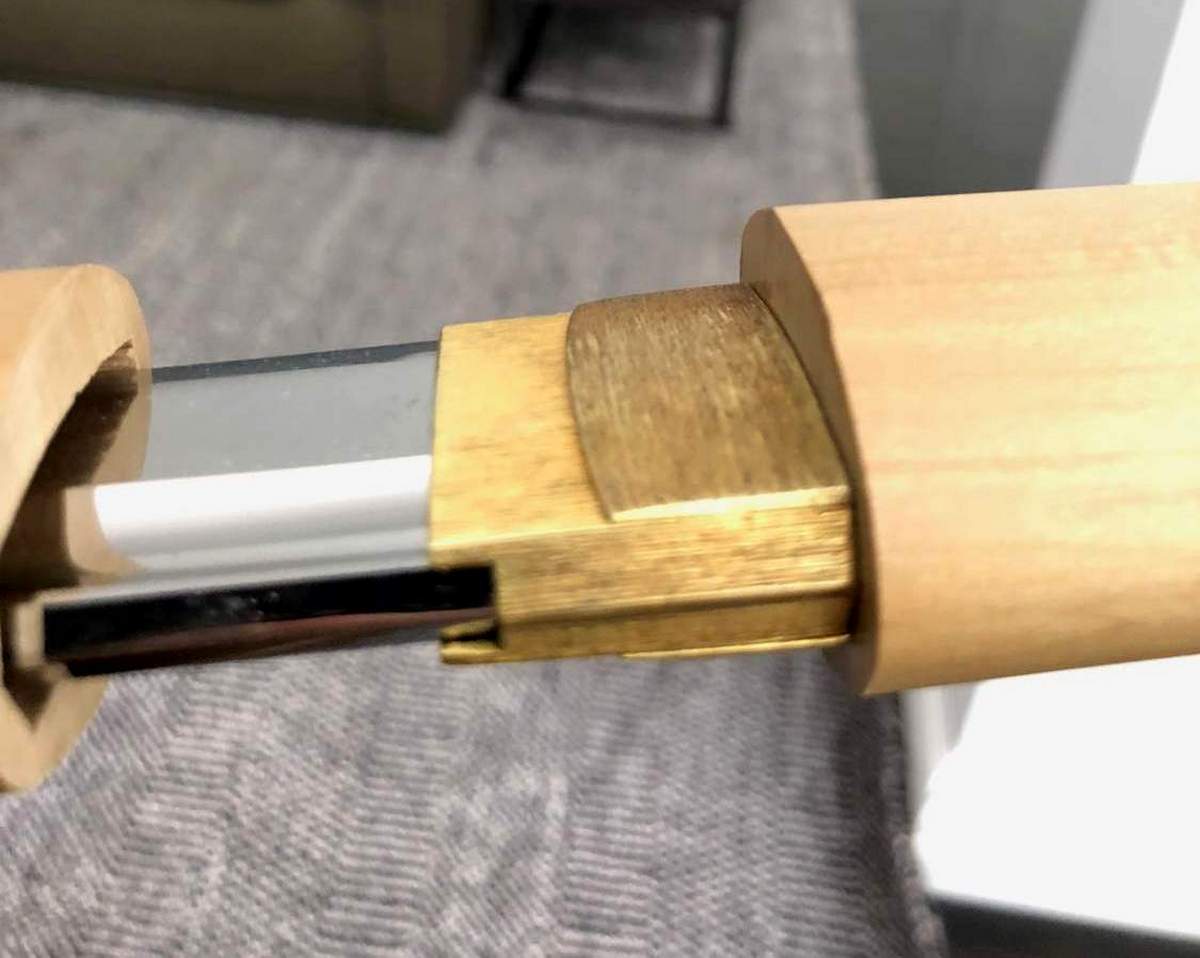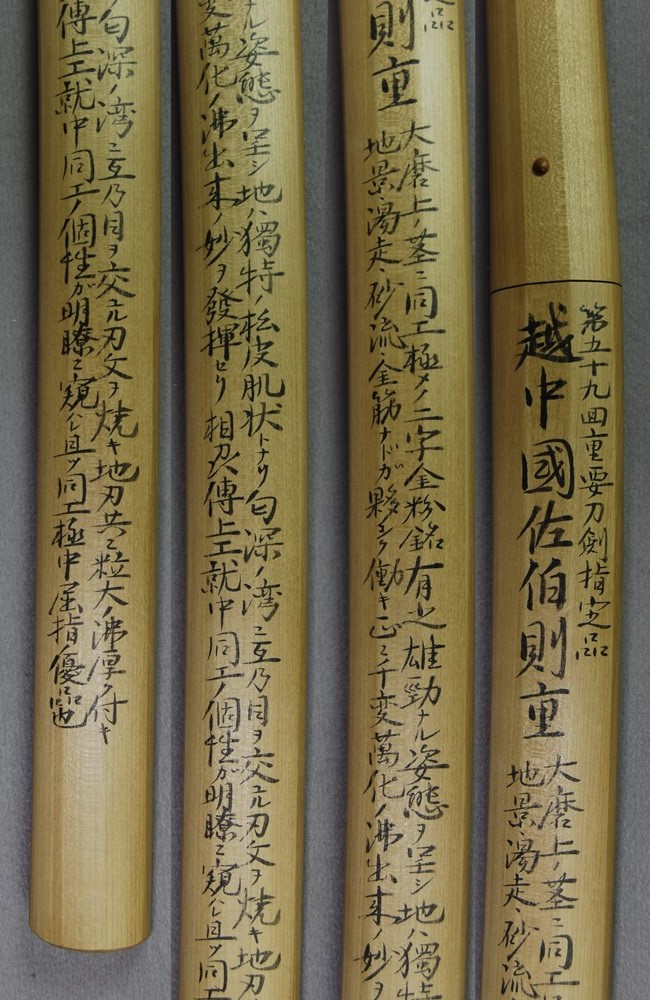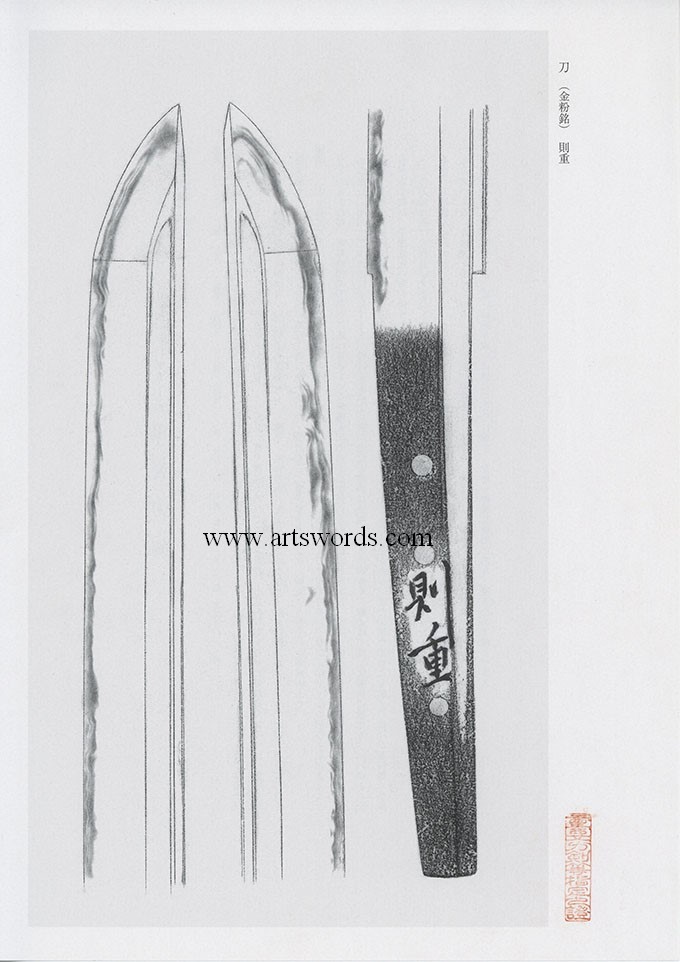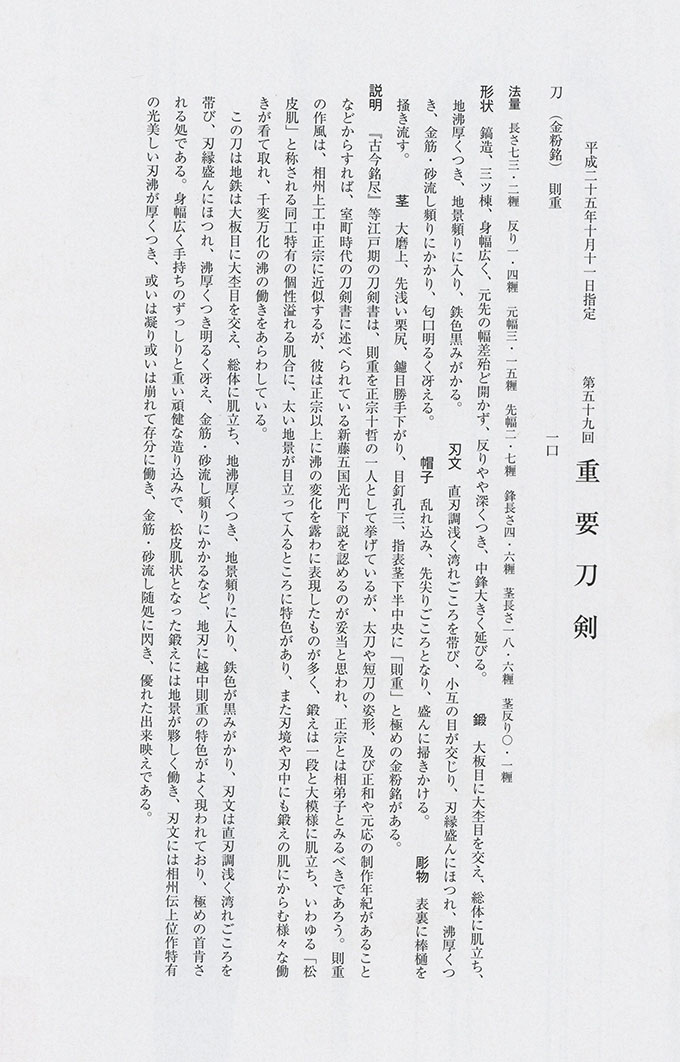 \
\A beautiful Juyo Daito By One Of Masamune's 10 Great Decuples Norishige
This excellent Juyo daito is made by Echu Norishige. This is truly a Soshu masterpiece by Norishige. Norishige is also considered one of the best of the 10 great students of Masamune (Masamune's Juttetsu). It has a beautiful Kinpun Mei attributing is also to Norishege. These super Juyo Rarely become available out side of Japan. Don't miss out!
I would like to thank Markus Sesko for doing the translations for me of the Juyo Zufu, Juyo paper and Saya Gaki by Mr. Tanobe.
Here is the information from the Juyo Paper:
Norishige
Jūyō-tōken at the 59th jūyō shinsa held on October 11, 2013
katana,
kinpunmei: Norishige (則重)
Measurements:
Nagasa 73.2 cm
Sori 1.4 cm
motohaba 3.15 cm
sakihaba 2.7 cm
kissaki-nagasa 4.6 cm
nakago-nagasa 18.6 cm
nakago-sori 0.1 cm
Point: elongated chū-kissaki
Mune: Mitumune
Grain pattern: Matsukawa hada
Hamon: Mixed Notare, Midare and Gunome formed by Kinsuji and Sunagashi
Boshi: Komaru with Hakikake
Mei: Kinpun
Description:
Keijō: shinogi-zukuri, mitsu-mune, wide mihaba,
no noticeable taper, relatively deep sori, noticeably elongated chū-kissaki
Kitae: overall standing-out ō-itame that is mixed with ō-mokume and that
features plenty of ji-nie and much chikei, the steel is blackish
Hamon: nie-laden suguha-chō with a bright and clear nioiguchi that overall tends
somewhat to a slightly undulating notare and that is mixed with ko-gunome and
plenty of hotsure, kinsuji, and sunagashi Bōshi: midare-komi with a rather
pointed kaeri and many hakikake
Horimono: on both sides a bōhi that runs with kaki-nagashi into the tang Nakago:
ō-suriage, shallow kurijiri, katte-sagari yasurime, three mekugi-ana, the sashi-
omote side bears centrally on the bottom half of the tang a two-character
kinpun-mei attribution to Norishige.
Explanation:
According to the Kokon Mei Zukushi (古今銘尽) and
other Edo period sword publications, Norishige was one of the Ten Students of
Masamune but judging from the
shapes of his tachi and tantō and extant date signatures from the Shōwa (正和,
1312- 1317) and Gen’ō (元応, 1319-1321), it rather appears that he was a fellow
student of
Masamune under Shintōgo Kunimitsu (新藤五国光) as Muromachi period sword texts
suggest. Among the early great Sōshū masters, Norishige’s workmanship is closest
to that
of Masamune but his blades are mostly more nie-laden and his kitae stands more
out and is larger structured, appearing overall as the highly unique so-called
matsukawa-hada (松
皮肌). Apart from that, the kitae is mixed with characteristic thick and prominent
chikei,
the ha features multifarious hataraki which are interwoven with the jihada, and
we see an infinite variety in nie activities.
This blade shows an overall standing-out ō-itame that is mixed with o-mokume and
that features plenty of ji-nie and much chikei. The steel is blackish and the
hamon is a bright
and clear, nie-laden suguha-chō that overall tends somewhat to a slightly
undulating notare and that is mixed with an abundance of hataraki along the
habuchi like for example plenty of kinsuji and sunagashi. Thus, we clearly
recognize the characteristic
features of Norishige and agree with the period attribution. The blade is with
its wide mihaba and thick kasane of a robust shape, shows a kitae in
matsukawa-hada and much chikei, and a nie-laden hamon whose beautifullu
sparkling nie are on part with the best Sōshū works. Also, the hardening
displays activities which make the ha vary between
tight and free kuzure sections and with the flashing kinsuji and sunagashi all
over the blade, we have here a work in an excellent deki
Juyo Paper translation:
Jūyō No. 13390
Certificate
katana, kinpunmei: Norishige (則重)
Measurements: nagasa 73.2 cm, sori 1.4 cm,
Keijō: shinogi-zukuri, mitsu-mune, relatively deep sori, noticeably elongted
chū-kissaki
Kitae: ō-itame that is mixed with ō-mokume and that features ji-nie chikei, the
steel is blackish
Hamon: nie-laden suguha-chō with a bright and clear nioiguchi that overall tends
somewhat to a slightly undulating notare and that is mixed with ko-gunome,
hotsure,
kinsuji, and sunagashi
Bōshi: midare-komi with a rather pointed kaeri and many hakikake
Horimono: on both sides a bōhi that runs with kaki-nagashi into the tang
Nakago: ō-suriage, katte-sagari yasurime, three mekugi-ana,
According to the result of the shinsa committee of our society we judge this
work as
authentic and rank it as jūyō-tōken.
October 11, 2013
[Juridical Foundation] Nihon Bijutsu Tōken Hozon Kyōkai, NBTHK
Sayagaki:
第五⼗九回重要⼑剣指定品
越中國佐伯則重 ⼤磨上ノ茎ニ同⼯極メノ⼆字⾦粉銘有之雄勁ナル姿態ヲ呈シ地ハ獨特ノ松⽪肌状トナリ匂深ノ
湾ニ互乃⽬ヲ交エル刃⽂ヲ焼キ地刃共ニ粒⼤ノ沸厚ク付キ地景・湯⾛・砂流・⾦筋ナドガ夥シ
ク働キ正ニ千変萬化ノ沸出来ノ妙ヲ發揮セリ相刕傳上⼯就中同⼯ノ個性ガ明瞭ニ窺ハレ且ツ同
⼯極中屈指ノ優品也
刃⻑弐尺四⼨⼀分余有之 于時⼄未仲冬探⼭邉道識「花押」
De s i g n a t e d a s jūyō-tōken at t he 59th
jūyō-shinsa
Etchū no Kuni Saeki N orishige
Designated as jūyō-tōken at t he 59th jūyō-shinsa
Etchū no Kuni Saeki Norishige
Ō-suriage but the tang bears a two-character kinpun-mei attribution to this
smith. The blade is of a powerful shape and t he ji shows a characteristic
matsukawa-hada. The hamon is a notarewith a wide nioiguchi that is mixed
with gunome and that features much large-graind nie and on top of that an
infinite variety of hataraki like chikei, yubashiri, sunagashi, and kinsuji.
The superb hardening in nie-deki clearly speaks for the hand of one of the early
great masters of the Sōshū tradition, particularly that of Norishige. Thus
we have here masterwork that stands out from all
blades attributed to this smith. Blade length ~ 7 3 . 2 c m - Written by
Tanzan Hendō [pen name of Tanobe Michihiro] in the eleventh
month of the year of the sheep of this era ( 2 0 1 5 ) + kaō
SOLD!
 \
\








